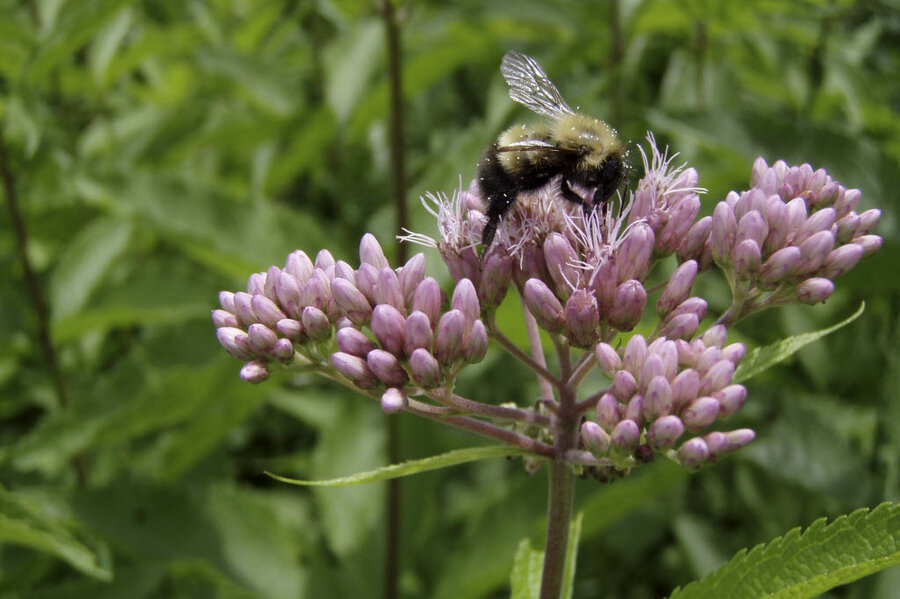Climate change turns up heat on bumblebees
Loading...
Bumblebees, the fuzzy black-and-yellow pollinators of some of our favorite foods are getting squeezed out of their habitat due to climate change, new research suggests.
The new study, which tracked the bounds of North American and European bumblebee populations, found that most species were getting pushed out of their Southern boundaries. However, unlike their similar flying friends including butterflies, the bees are not extending the range in which they venture further north.
“In general, bumblebee species are not doing this. It’s like they’ve been locked down in the North,” Jeremy Kerr, one of the author’s studies, told the Monitor’s Joseph Dussault.
Dr. Kerr and his colleagues suggest in the study that this “range compression” is a result of global climate change.
Researchers compiled and mapped 110 years of bee distribution from hundreds of thousands of specimen records and found that bumblebee distribution patterns mirrored climate change trends.
“The net effect is that climate change is kind of like a vise, where [bumblebee populations] are being crushed from the southern edges of their range inward,” said Kerr, a professor of biology at the University of Ottawa in Canda.
As for the reason why this is happening?
“The short answer is, we don’t know,” Leif Richardson, another lead author of the paper and a researcher at the University of Vermont’s Taylor Ricketts Lab, told the Monitor.
But the scientists do have some theories. The squeezing of the bees could be caused by interactions with host plants, interactions with parasites, and other ecological factors.
Another interesting aspect of bumblebee distribution found by the study is that bee populations are also being shifted upward or downward in elevation depending on how far from the equator they reside.
“We find that bumblebees in the more southern areas of range are moving upslope, thereby tracking their thermal niche,” Dr. Richardson said. “But in northern areas, we actually see an overall decline in mean elevation occupied by the bees.”
Possible causes for this trend could include changes in vegetation and plant coverage that have been driven by climate change.
Other bees in the United States have been suffering dramatic losses as well. Honeybee populations have been steadily declining for several years; and in the past year have dropped by 40 percent, according to a US Department of Agriculture report released in April.
While bumblebees don’t produce honey for human consumption, the decline in their numbers could seriously affect other foods we eat.
Bumblebees are vitally important pollinators of blueberries, pumpkins, tomatoes, peppers, squash, and apples. This means that fewer bumblebee species could mean more expensive and less colorful and nutritious dinners for us.
In their study, Kerr and Richardson offer up some potential, but temporary solutions to the problem. For example, scientists could relocate the declining bee populations further north through assisted migration. That idea, however, has raised ethical questions about moving a non-native species to a place where they may outcompete the insects who are already there.
For Kerr though, the ethical concerns are outweighed by the immediacy of the issue and the threat of mass extinctions.
“This is a huge loss, and it has happened very quickly,” Kerr told Agence France-Presse. “Impacts are large and they are underway. They are not just something to worry about at some vague, future time.”








